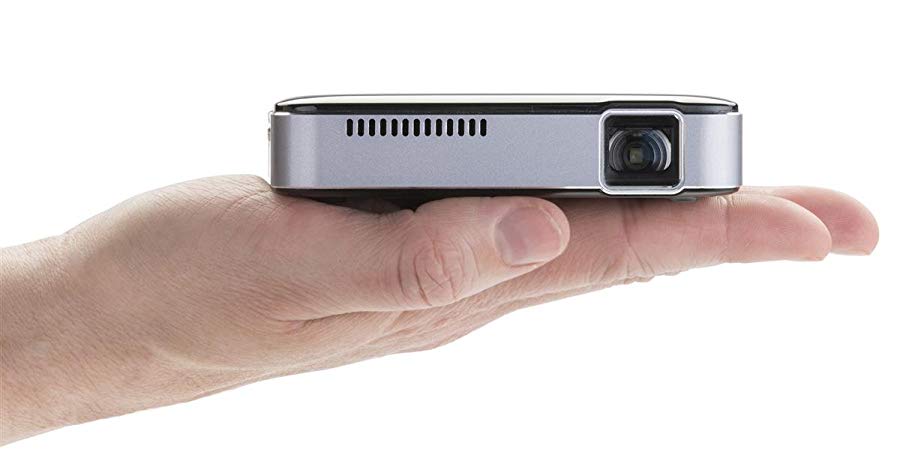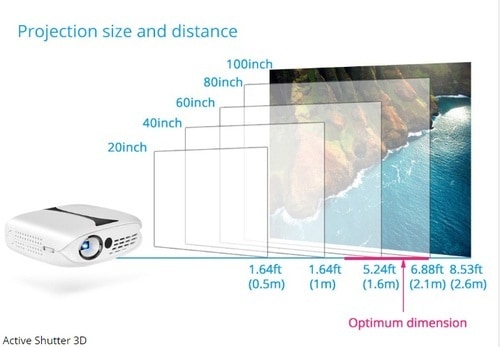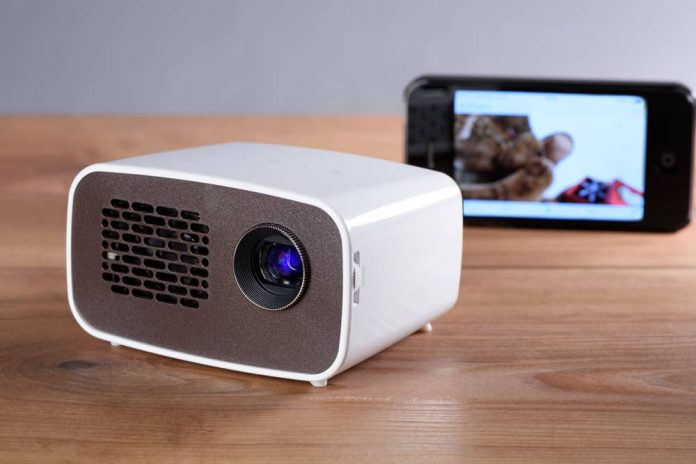Pico projectors are small, hand held versions of the larger video projectors that are commonly found in classrooms, board rooms, and presentation halls all over the world. The main selling point of most pico projectors is the diminutive foot print that they require.
Most can literally be stored in a pocket, in a side compartment on a travel bag, or simply slip inside the same laptop case that most professionals carry with them. Yet these small devices can provide instant video at screen sizes that rival those of the larger desktop style or mounted video projectors. Pico projectors are not without their drawbacks however, many of which will be discussed below.
Reasons to Consider Buying A Pico Projector

The size and weight of the pico projector is often perceived as its biggest benefit. Most pico sized units weigh in at less than a pound. Even at this tiny size some models, such as the 3M Shoot N’ Share combine a pico projector with a solid state video camera.
Almost all pico projectors have built in composite video jacks and many newer models also feature an HDMI input as well. At the same time most of the lamps are made from LED’s or lasers and are rated for up to 20,000 hours of life compared to the normal 5,000 hours on most larger conventional units.
In addition to their size there are several other positive aspects to pico projectors such as the ability to mount the entire projector on a standard tripod mounting screw. This provides for greater flexibility in image presentation and allows the image to be shown on any surface and at any angle. Another great thing about some models is the long battery life they can achieve. Some newer models boast up to 4 hours of battery life under normal use.
Negative Aspects of Pico Projectors

With small size comes small performance. Unlike their home theater or office style brethren pico projectors average between 10 and 60 lumens in brightness. In contrast a desktop or ceiling mounted unit will normally provide 2000 lumens or more. This means that pico projectors usually cannot be used effectively in brightly lighted rooms unless the image is kept very small and close to the projector. In a similar vein, another downside to the pico units is that almost none of them have an adjustable zoom on the lens, meaning that the size of the projected image is adjusted solely by how far the projector is from the screen.
While pico projectors are incredibly convenient for the traveler, they are not a one size fits all solution. Most people needing to make large group presentations will have to stick with full size units, but those that need to present information to smaller, more controlled groups may find that one of the dozens of new pico projectors coming out this fall is perfect for their needs.


















